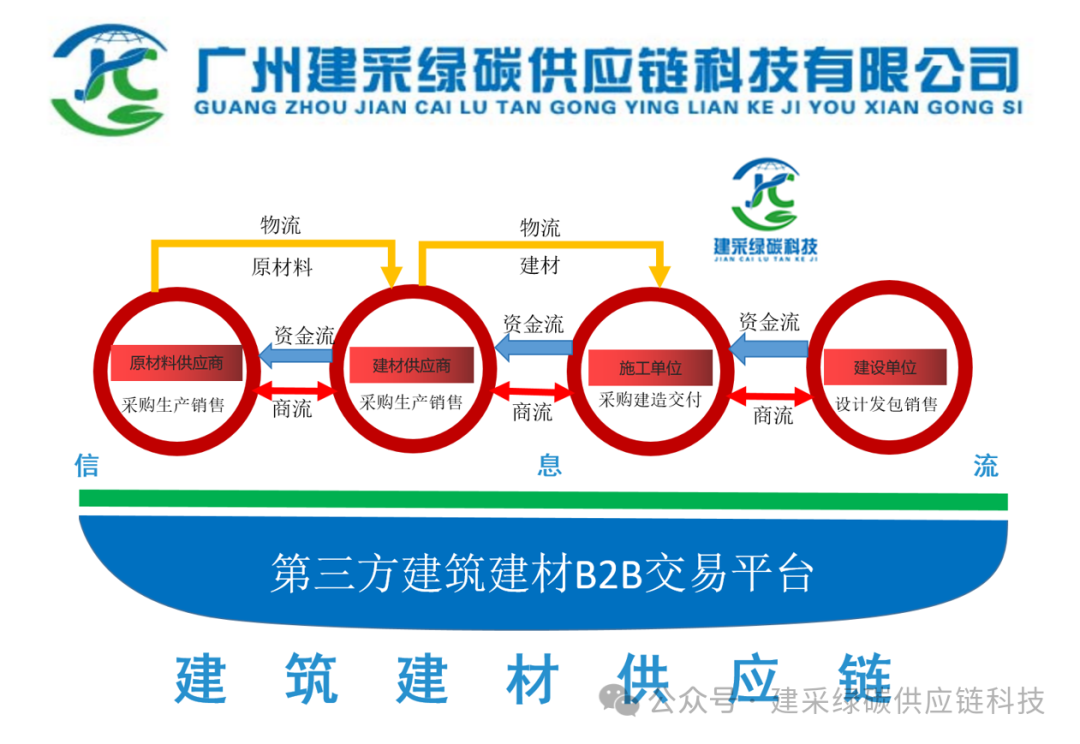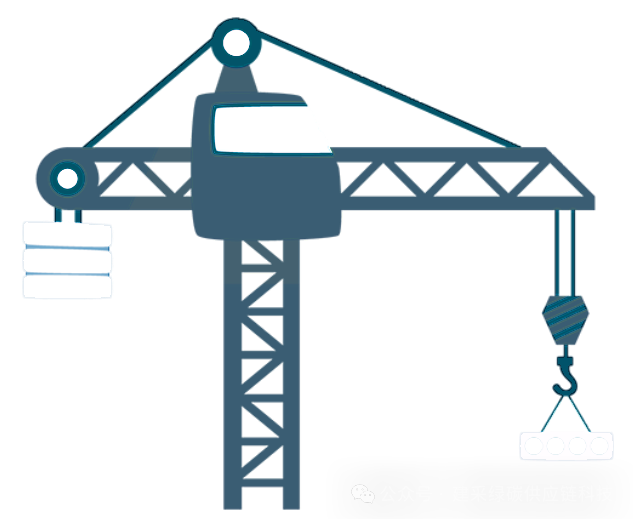





Analysis of Construction Supply Chain Management Practices
— MIMI Group’s Thematic Promotion Month —

1. First, Understand: What is SPI?
In the construction supply chain, SPI refers to the Supplier Performance Index, which is essentially a tool for calculating the “clear accounts” for suppliers.
How is it calculated?
SPI = (Total Procurement Cost + Poor Quality Cost) ÷ Total Procurement Cost
Total Procurement Cost: This is the money spent on materials such as rebar, cement, and pipes. For example, if 100 tons of steel cost 500,000, that 500,000 is the base.
Poor Quality Cost: This is key! It refers to the extra money spent due to suppliers not performing well, such as:
Steel arriving 3 days late, causing work stoppage, with machinery idle costs and worker downtime costing 200,000 per day, totaling 600,000 for 3 days;
Cement not meeting standards, requiring rework after form removal, with rework and downtime costs totaling 300,000;
Poor quality safety nets resulting in a fine of 100,000 from safety inspection authorities…
What does the SPI value mean?
SPI=1: The supplier has perfectly fulfilled their obligations, and we haven’t spent a single extra cent;
SPI>1: The higher the value, the more the supplier has “duped” us. For example, SPI=1.5 means we have spent 50% more unnecessarily!

2. What Benefits Can Construction Companies Gain from Calculating SPI?
(1) Cost calculations become precise, exposing all hidden costs
In construction, we fear “settling accounts after the autumn”—on the surface, materials seem cheap, but problems arise during use. SPI brings all these “hidden pitfalls” to light:
Case: A project purchased a batch of low-cost cables, saving 10% on unit price, but upon arrival, the insulation thickness was found to be substandard, and the supervisor required a complete return. The back-and-forth delayed the project by 15 days, costing an additional 450,000 in machinery rental. After calculating SPI, it was found that the actual cost was 8% higher than selecting a quality supplier!
Benefit: In the future, we won’t have to make arbitrary supplier selections; whoever causes us to spend more can be directly addressed with the SPI value.
(2) Quality and progress are tightly controlled, making it difficult for suppliers to cut corners
Construction relies on “interconnected links”; if a supplier drops the ball, the entire project suffers. SPI can turn quality and progress requirements into “hard indicators”:
Quality is managed effectively: For example, requiring a concrete compressive strength rate of ≥95% after 28 days, deducting 50,000 for every 1% below. To avoid deductions, suppliers proactively upgraded their mixing station equipment, increasing the strength rate from 88% to 97%.
Progress is closely monitored: Agreeing on a steel timely delivery rate of ≥90%, with penalties for each delay based on the number of days affecting the schedule. A certain supplier exceeded SPI three times in a row and was directly blacklisted, forcing other suppliers to avoid delays.
(3) Supplier performance is clear at a glance, providing a basis for cutting off weak links and supporting strong ones
Construction companies have numerous suppliers (there may be over 20 suppliers for steel), and SPI can quickly help “deploy troops”:
Cutting off weak links: Suppliers with SPI > 1.3 are directly eliminated. For example, a project removed 5 high SPI sand and gravel suppliers, and after consolidating procurement, obtained better prices and payment terms.
Supporting strong suppliers: Providing quality suppliers with SPI < 1.1 with “special treatment”, such as increasing order volume or prepaying part of the payment, in exchange for prioritizing our supply. A certain state-owned enterprise used this method to ensure their core steel supplier improved their on-time delivery rate to 95%.
(4) Risks are identified early, avoiding panic when work stops
The construction supply chain is prone to “breaking links”—heavy rain can wash away sand and gravel plants, environmental regulations can halt cement plants, and steel prices can fluctuate daily… SPI can provide early warnings of these risks:
Case: A project monitored the SPI of a cement supplier rising for two consecutive weeks, and upon investigation, found it was due to environmental rectification at the plant leading to reduced capacity. They quickly activated backup suppliers, ensuring materials were delivered before the site ran out, avoiding a potential loss of millions due to work stoppage.
Benefit: It’s like installing a “monitor” on the supply chain; we can detect potential issues in advance, preventing passive responses.
3. What Challenges Must Construction Companies Overcome to Develop SPI Systems?
(1) Difficulties in accounting: Some accounts are too “virtual” to clarify or define
1. Virtual Account 1: Incomplete calculation of hidden costsFor example, using inferior waterproof materials that were not detected during acceptance, leading to millions in repair costs three years later due to leaks. How can this cost be attributed to the supplier? Traditional accounting does not record this, making it impossible to calculate SPI.
2. Virtual Account 2: Responsibility is unclearIn the case of materials supplied by the client, the supplier claims “it was due to improper installation by the construction team”, while the construction team says “the materials themselves were problematic”. Who bears the poor quality costs? If this cannot be clarified, SPI cannot be calculated.
(2) Data difficulties: Each party operates independently, leading to mismatched information
1. Suppliers operate “standalone”Many small and medium suppliers still use Excel for accounting and handwritten delivery notes, while we are using BIM systems to manage progress, leading to data mismatches. For example, a supplier claims “all goods have been delivered”, but the site receipt shows a few tons missing, requiring half a day just to reconcile data.
2. Departments are “playing Tai Chi” with each otherThe procurement department only looks at prices, the engineering department manages quality, and the finance department calculates costs, each working independently. Calculating SPI requires gathering data from all these departments, but they often do not communicate, leading to missing or chaotic data.
(3) Industry difficulties: Non-standard, frequent changes, making it hard to establish standards
1. Non-standard components are too troublesomeIn projects, we often need custom components, such as irregular steel structures, where each supplier has different processes and quality standards, making it difficult to calculate poor quality costs. It often relies on arbitrary judgments, leading to conflicts.
2. Unfavorable weather conditionsA sudden typhoon may prevent the delivery of sand and gravel; suppliers are not intentionally delaying, but SPI will still rise. How to distinguish between “the supplier is truly incompetent” and “force majeure”? Without clear criteria, suppliers may feel unfairly treated.
(4) Implementation difficulties: High costs and significant resistance, making it hard for small and medium enterprises
1. Costly systemsDeveloping an SPI system requires purchasing software, building platforms, and training personnel, which can cost hundreds of thousands. Small and medium construction companies cannot afford this. Even if they manage to implement it, if they cannot adapt or if the data is chaotic, it ultimately becomes a useless tool.
2. Resistance from experienced employeesSome long-time procurement employees only trust “relationships” and “prices”, believing that calculating SPI is “futile effort”. Getting them to change processes and record data is extremely difficult, leading to significant resistance in implementation.

4. What to Do? Here Are Some Practical Solutions
(1) Cost calculations must be “real”: first list items, then assign responsibilities
Create a “Construction Poor Quality Cost List”: List common issues, such as rework due to rusted rebar (calculated at 2,000 per ton), or color difference in tiles (totaling 5,000 for shipping and downtime), and clarify these with suppliers in advance to avoid disputes later.
Responsibility assignment should be “clear-cut”: Write in the contract that “all risks belong to the supplier until materials are accepted as qualified”, regardless of whether it is a transportation issue or a quality issue, to avoid passing the buck.
(2) Data must be “connected”: start small, don’t aim for perfection
Start with electronic delivery notes: Have suppliers use a mobile app to scan and create delivery notes, and confirm receipt on-site by scanning, automatically syncing data to the system, eliminating the need for manual reconciliation. After piloting this in a project, data verification efficiency improved by 80%.
Department rotation to “break the ice”: Have personnel from procurement, engineering, and finance rotate to the supply chain department for two months to understand each other’s needs, so that future data requests can be better coordinated.
(3) Standards must be “flexible”: categorize by type and consider weather conditions
Set standards by category:
Standard components (e.g., rebar): Strictly calculate poor quality costs according to national standards;
Non-standard components (e.g., landscape sculptures): Sign and store samples in advance, and determine poor quality costs based on “sample conformity”; for example, if color deviation exceeds 5%, all rework costs are borne by the supplier.
Weather impacts should be “discounted”: Agree with suppliers that “in cases of force majeure such as heavy rain or earthquakes, poor quality costs will be halved during SPI assessments”, which is both reasonable and acceptable to suppliers.
(4) Implementation must be “steady”: pilot first, then replicate, don’t force it
Select a simple category to start: For example, begin calculating SPI for standardized materials like cement, which have simple processes and easily obtainable data. Once the pilot is successful, expand to more complex categories like steel structures and electromechanical equipment.
Provide incentives for experienced employees: When implementing SPI, set up “performance rewards” for procurement personnel who cooperate well, such as giving 5% of the cost saved through SPI as bonuses to the team, to boost motivation.

5. Conclusion:SPI is not a panacea, but not using it will definitely lead to significant losses
In the construction industry, supplier management has always been a “troublesome matter”—price, quality, and progress can all be headaches. While SPI may not solve all problems, it at least allows us to clarify accounts, see suppliers clearly, and prevent risks in advance.
Small and medium construction companies should not be deterred by the term “developing systems”; start with a simple SPI ledger in Excel, recording every delay and quality issue from suppliers, and gradually find a way forward.
Remember this: If suppliers are well managed, the project is already halfway to success. SPI is our “magic mirror”; if used well, it can reduce pitfalls in the supply chain and increase project profitability!
Summary
SPI essence: Calculate the “total cost” for suppliers, moving away from “price-only” thinking;
Core value: Cost transparency, controllable quality and progress, evidence-based supplier optimization, early risk warnings;
Practical suggestions: Break through from four dimensions: lists, data, standards, and pilots; start doing it first!
